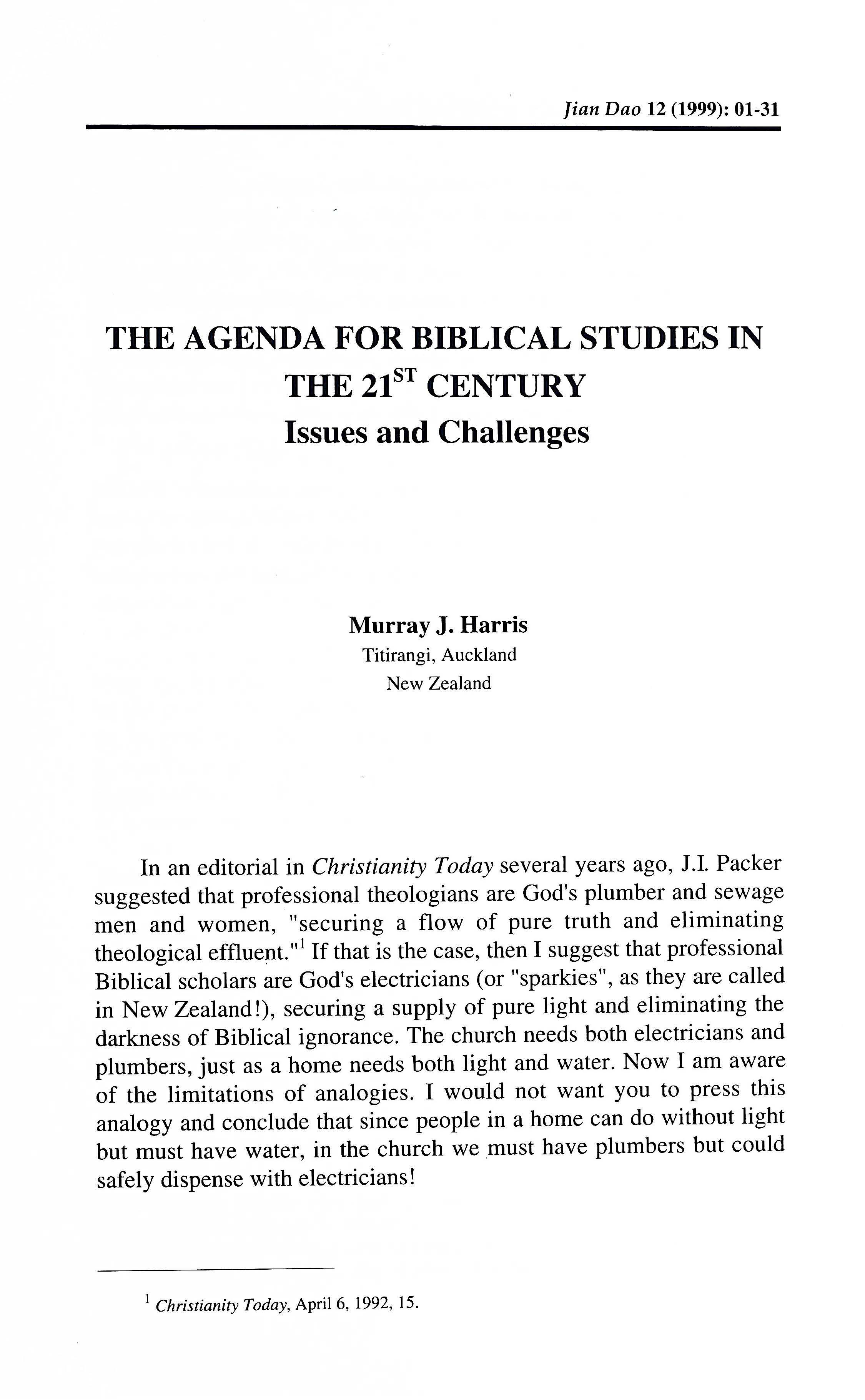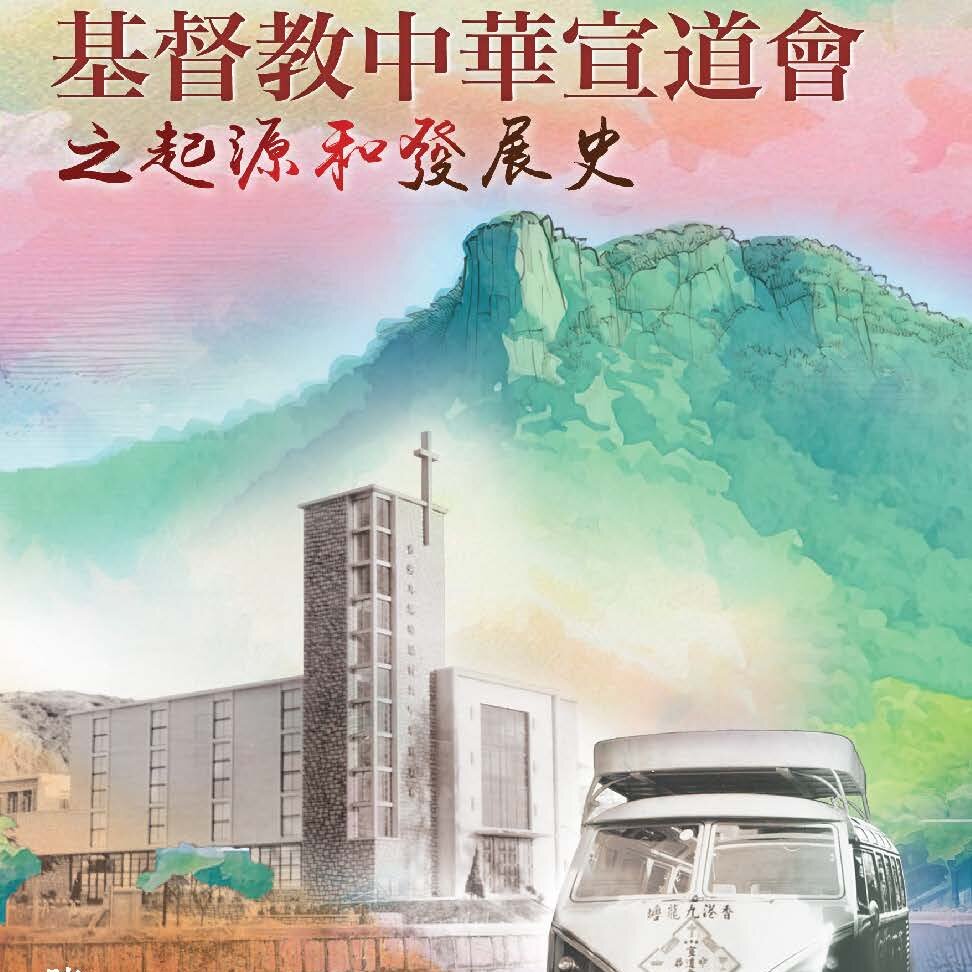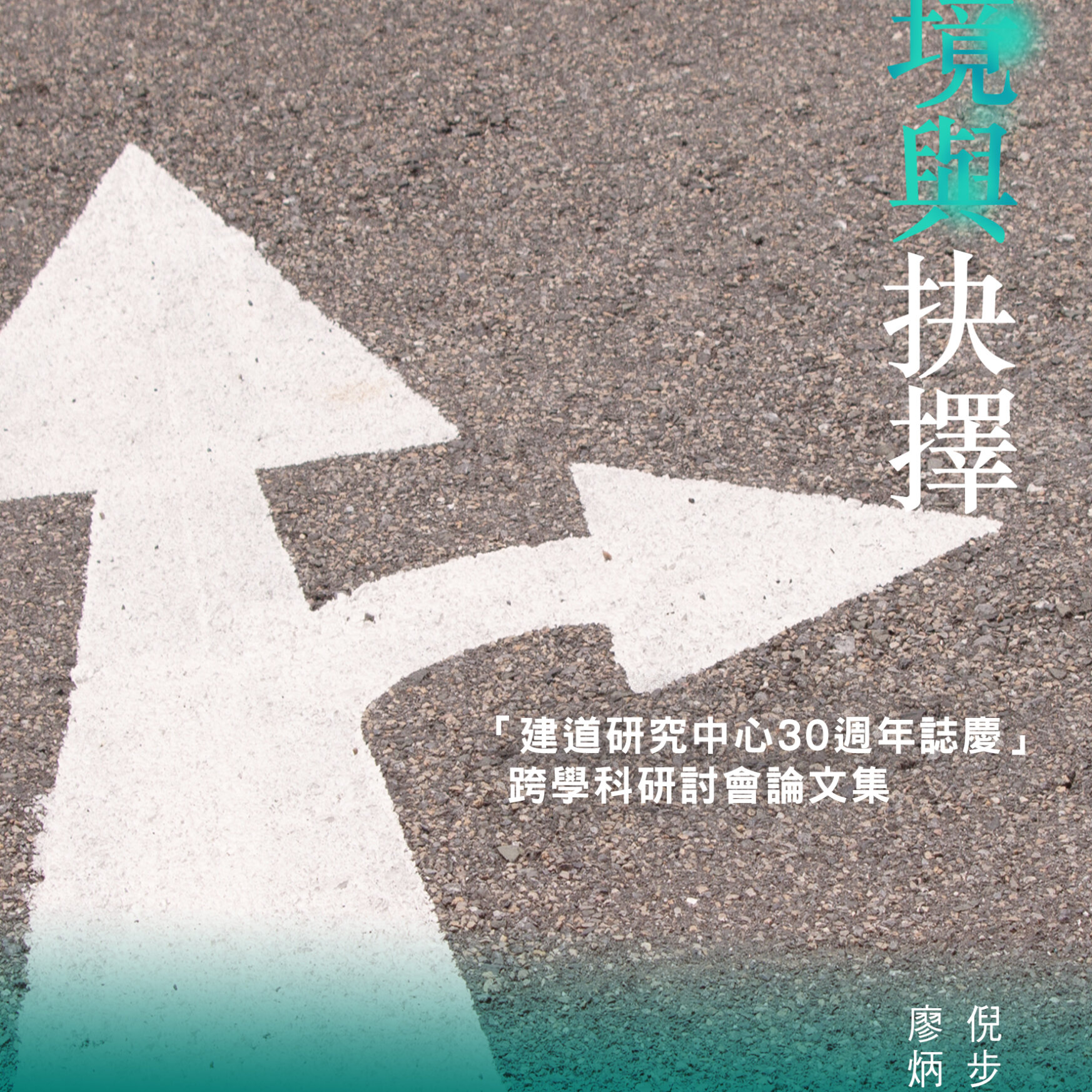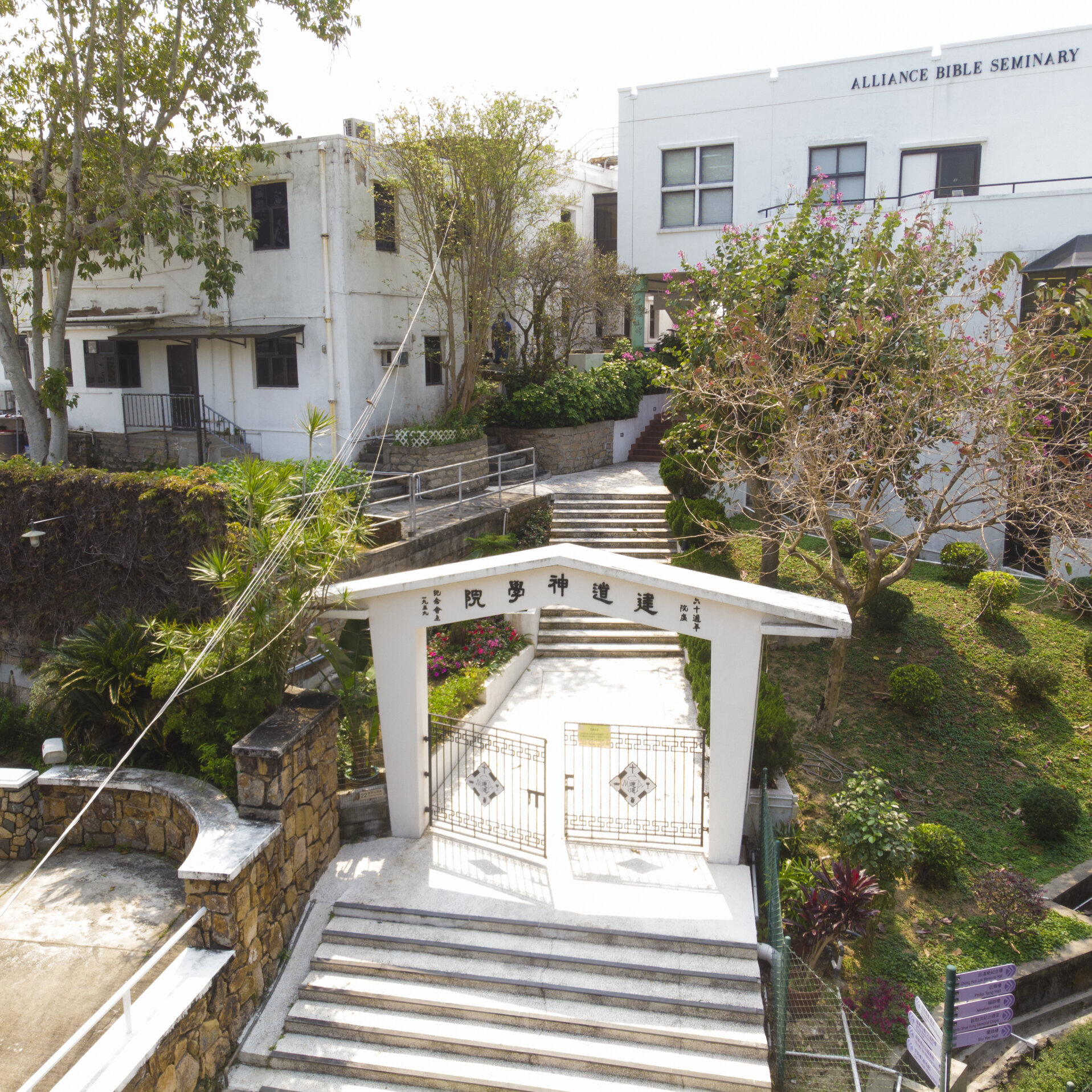The Agenda For Biblical Studies In The 21St Century Issues And Challenges[二十一世紀聖經研究獻議(中譯)] / Murray J. Harris 夏理士
撮要
本文旨在點出現今新舊約研究的趨勢及有待研究的課題。作者認為新舊約的背景、文法及語意研究需進一步發展。此外,他亦提出一個新約神學的研究框架,並宣稱聖經學者應致力展現聖經各經卷的和諧性;他認為聖經神學的研探,使我們對教義有正確的了解。最後,作者認為在二十一世紀,福音派學者應加強合作,共同進行大規模的研究,並要進一步發揮歷史文法釋經的優點及在釋經過程中注意經文的解釋歷史。
ABSTRACT
Many issues press for attention in biblical studies. With regard to the Old Testament (OT), the current focus on the holistic reading of texts raises the issue of the process of composition leading to the final form of a book. The question of historicity and the place of archaeology remains perennial issues. The so-called “new literary criticism” with its advocacy of an open-ended polyvalence of texts should prompt defenses of the pursuit of an author’s intended meaning. Recent disturbing trends in the study of Israelite religion call for a response. We need a fresh study of Isaiah’s “Servant Songs”, a standard successor to Gesenius-Kautzch-Cawley, and exegetical guide to the Hebrew Bible, and a comprehensive grammar of the LXX.
In the New Testament (NT) studies, it would be splendid to have an archaeological commentary, with further study on the Gospel of Thomas, and in the area of grammar specialized studies of the genitive, the aorist tense, the article, prepositions, and the style of individual authors. Wider issues include Jew-Gentile relations in the early church, the relation of Paul to Jesus, unity and diversity in the NT, NT theology, and the examination of the NT foundations of distinctive evangelical convictions.
In biblical theology, special attention should be given to the use of the OT in the NT, the legitimacy of harmonization, the doctrine of the Trinity, names in the Bible, sacrifice, the doctrine of forgiveness, and the search for the center of each old and new Testament, and of Scripture as a whole.
Three challenges have been identified: the need for worldwide cooperation among evangelicals in strategically important research and publication ventures; the need to respect the past as well as engaging the present; and the need for the translation of the key works.
原載於《建道學刊》12期(1999年7月),頁1-31。
Latest Articles
新手牧者研究計劃(三):新手牧者的身心靈狀態 / 盧慧儀
2025 年 11 月 19 日
個體與關係:滕近輝思想中「深化」的靈性觀 / 倪步曉
2025 年 11 月 18 日
香港九龍塘基督教中華宣道會之起源和發展史/陳智衡
2025 年 10 月 20 日
Highlights
[電子書]困境與抉擇:「建道研究中心30週年誌慶」跨學科研討會論文集/廖炳堂、倪步曉主編
2025 年 1 月 2 日
從梧州到長洲:建道神學院125年的挑戰與恩典 / 陳智衡
2023 年 10 月 1 日
微小教會的見證/高銘謙
2023 年 6 月 1 日







